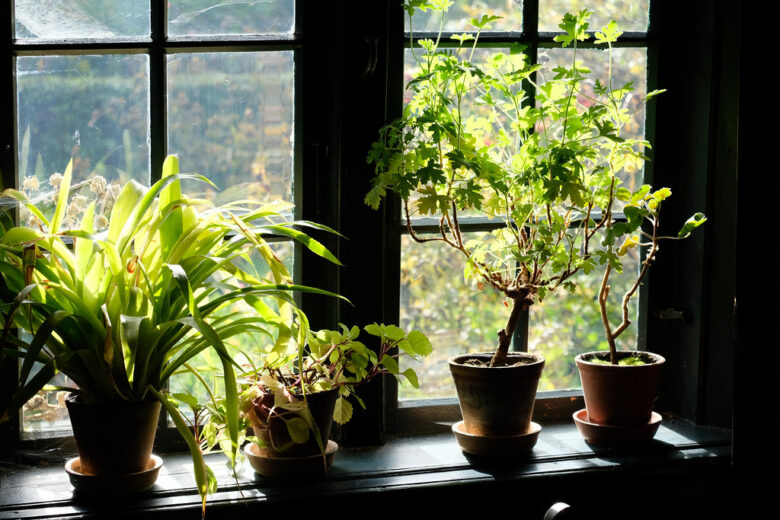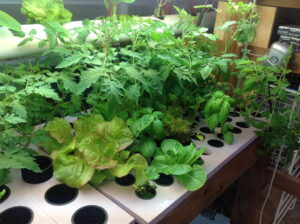Growing plants indoors through hydroponics can be a mesmerizing experience – the thrill of seeing lush foliage thriving in your very own home is unparalleled. However, as any green thumb knows, the journey towards plant perfection is not always smooth sailing. From wilting leaves to pH imbalances, indoor hydroponic systems can sometimes sprout unexpected challenges. But fear not, fellow plant enthusiasts! We have arrived with a treasure trove of troubleshooting solutions to help you combat those perplexing problems and ensure your beloved greens thrive in their hydroponic paradise. Get ready to dive into the depths of indoor hydroponic troubleshooting, armed with knowledge and ready to restore vitality to your plants. It’s time to transform from a plant caregiver to a master problem-solver, all in the name of cultivating a harmonious and flourishing indoor oasis.
Identifying Common Indoor Hydroponic Problems: A Comprehensive Guide
One of the joys of indoor hydroponic gardening is being able to cultivate healthy plants all year round, free from the constraints of outdoor climate and space limitations. However, even the most experienced growers can encounter challenges along the way. In this comprehensive guide, we will explore the most common indoor hydroponic problems and provide you with practical solutions to ensure your plants thrive.
1. Nutrient Imbalances:
One of the key aspects of successful hydroponic gardening is maintaining the perfect balance of nutrients for your plants. Nutrient imbalances can manifest in various ways, such as yellowing leaves, stunted growth, or nutrient burn. To tackle this problem, use a high-quality pH and nutrient meter to regularly monitor and adjust the nutrient solution. Remember to follow the recommended dosage for each growth stage and adjust accordingly based on plant response. Consider experimenting with different nutrient compositions to find the optimal balance for your specific plants.
2. Pest Infestations:
Indoor gardening does not guarantee freedom from pests. Unwanted visitors like aphids, spider mites, or fungus gnats can wreak havoc on your precious plants. To address pest infestations, it is important to maintain a clean and hygienic growing environment. Regularly inspect your plants for any signs of pests and promptly isolate affected plants if necessary. Use organic pest control methods such as insecticidal soaps, neem oil, or beneficial insects to combat these invaders. Additionally, sticky traps and yellow sticky cards can be utilized to monitor and capture flying pests.
3. Inadequate Lighting:
Light is the lifeblood of plants, and improper lighting can lead to poor growth and weak plants. Ensure that your indoor gardening setup provides adequate and appropriate lighting for your plants’ specific needs. Consider factors such as light intensity, duration, and spectrum. LED grow lights are a popular choice due to their energy efficiency and the ability to customize the light spectrum. Monitor your plants for any signs of light stress or light deficiency, such as elongated stems or pale leaves, and adjust the lighting accordingly. Remember to maintain a consistent lighting schedule to simulate day and night cycles for optimal plant growth.
By understanding and addressing these common indoor hydroponic problems, you can create a conducive environment for healthy plant growth. Implementing these solutions and continually learning from your plants’ response will pave the way for a successful and rewarding indoor hydroponic gardening journey. Remember, each plant is unique, so don’t hesitate to experiment and adapt to find the perfect balance for your green companions.
Preventing Nutrient Deficiencies: Key Strategies for Healthy Hydroponic Plants
In order to maintain optimal health in your indoor hydroponic plants, it is crucial to prevent nutrient deficiencies. These deficiencies can hinder growth and result in weak and unhealthy plants. Fortunately, there are several key strategies you can implement to ensure your hydroponic plants receive the essential nutrients they need to thrive.
1. Balanced nutrient solution: The first step in preventing nutrient deficiencies is to provide your plants with a well-balanced nutrient solution. This solution should contain the right combination of macronutrients (nitrogen, phosphorus, potassium) and micronutrients (iron, magnesium, calcium) that are essential for plant growth. Regularly monitor the pH levels of the solution to ensure it remains within the optimal range for nutrient absorption.
2. Consistent monitoring and adjustments: It is important to regularly monitor the nutrient levels in your hydroponic system. Use a nutrient testing kit to measure the levels of the essential elements in your solution. If any deficiencies are detected, promptly make adjustments to the nutrient solution to restore the balance. Keep in mind that different plant species have varying nutrient requirements, so it is crucial to research the specific needs of your plants and make adjustments accordingly.
3. Supplement with beneficial additives: In addition to a balanced nutrient solution, consider supplementing your hydroponic system with beneficial additives. These additives can enhance nutrient uptake and improve overall plant health. For example, using seaweed extracts can stimulate plant growth and boost disease resistance. Additionally, incorporating beneficial bacteria and fungi can enhance nutrient availability and promote a healthier root system. Take advantage of these additives to give your plants an extra boost in preventing nutrient deficiencies and promoting their overall well-being.
Managing pH Fluctuations in Indoor Hydroponic Systems: Tips for Optimal Plant Growth
One of the most common challenges encountered in indoor hydroponic systems is managing pH fluctuations. It’s vital to maintain optimal pH levels for your plants to thrive and produce healthy crops. In this post, we will share some valuable tips and solutions to help you troubleshoot pH issues and ensure optimal plant growth in your hydroponic setup.
1. Regularly monitor pH levels: pH levels can fluctuate due to various factors such as water quality, nutrient imbalances, or biological activity. Invest in a reliable pH meter or pH test kit to regularly check the pH of your hydroponic solution. Aim for a pH range of 5.5 to 6.5 for most plants, as this is the range where nutrients are most readily available.
2. Adjust pH as needed: If you notice that your pH levels are deviating from the optimal range, it’s vital to take corrective action promptly. To lower pH, you can add small amounts of pH down solutions like phosphoric or nitric acid. To raise pH, use alkaline solutions like potassium hydroxide or potassium bicarbonate. Remember to make gradual adjustments and retest the pH to avoid sudden changes that could stress your plants.
3. Maintain a balanced nutrient solution: An imbalanced nutrient solution can contribute to pH fluctuations. Ensure you are providing your plants with a well-balanced mix of essential nutrients, including nitrogen, phosphorus, and potassium (NPK), as well as micronutrients. Consider using pH stabilized nutrient solutions that are formulated to maintain a consistent pH level. Regularly check and adjust nutrient levels to prevent nutrient imbalances that can affect pH stability.
Addressing Pest Infestations in Indoor Hydroponics: Effective Controls and Prevention Measures
Indoor hydroponics is a fascinating way to grow plants without soil, but just like any other method of gardening, it’s not immune to pesky pest infestations. Dealing with pests in an indoor hydroponic system requires a proactive approach that combines effective controls and prevention measures to maintain healthy plants. Here, we will explore some tried-and-true solutions to address and prevent pest infestations in your indoor hydroponic setup.
1. Identify the Culprits:
The first step to combating pests is to identify the specific culprits wreaking havoc on your indoor hydroponic garden. Some common pests that may infiltrate your system include aphids, spider mites, whiteflies, and fungus gnats. Carefully examine your plants and their surroundings to spot any signs of infestation, such as discolored leaves, webbing, or tiny insects. Identifying the pests correctly will help you choose the most appropriate control methods to get rid of them.
2. Implement Natural Predators:
Instead of relying solely on harsh chemicals, consider introducing natural predators to your indoor hydroponic system. Beneficial insects like ladybugs, lacewings, and predatory mites can help keep pest populations in check by feasting on the unwanted intruders. These natural predators can be purchased from reputable suppliers or even attracted to your garden by planting companion plants that provide them with shelter and food. By introducing a natural balance, you can effectively control pests without harming your plants or the environment.
3. Maintain a Clean and Controlled Environment:
Prevention is key in keeping your indoor hydroponic system pest-free. Maintain a clean and controlled environment by regularly cleaning and sterilizing your equipment, ensuring that any unused growing media is properly disposed of, and keeping the surrounding area tidy. Additionally, practicing good hygiene by washing your hands and changing clothes before entering the growing area can prevent the introduction of pests. Implementing strict hygiene measures and regularly monitoring your plants will go a long way in preventing pest infestations from taking hold.
Creating an Ideal Environment for Hydroponic Plants: Temperature, Humidity, and Light Management
One of the key elements in achieving successful hydroponic plant growth is creating an ideal environment. Temperature, humidity, and light management play crucial roles in the health and productivity of your indoor hydroponic garden. By understanding and controlling these factors, you can troubleshoot common problems and ensure your plants thrive.
Firstly, maintaining the correct temperature is essential for the optimal growth of your hydroponic plants. Most hydroponic crops prefer a daytime temperature between 70-75°F (21-24°C) and a nighttime temperature between 65-70°F (18-21°C). Ensure your hydroponic setup is equipped with a reliable thermometer to monitor the temperature accurately. Consider implementing a cooling system like air conditioning or fans to regulate high temperatures. In cooler environments, using a heating pad or a greenhouse heater can provide the warmth necessary for plant growth.
Secondly, humidity levels can greatly influence the success of your hydroponic garden. Typically, a relative humidity range of 50-70% is recommended. To maintain proper humidity, incorporate a humidifier or dehumidifier depending on the needs of your plants. Leafy greens, such as lettuce or spinach, thrive in higher humidity, while fruiting plants like tomatoes prefer lower humidity levels. Regularly monitor and adjust humidity levels to prevent the growth of mold, mildew, or other harmful pathogens.
Lastly, effective light management is vital for your hydroponic plants to photosynthesize and grow. Ideally, your plants will require 14-18 hours of light per day. High-intensity discharge (HID) lamps, such as metal halide or high-pressure sodium lights, are popular choices for indoor hydroponics due to their efficiency and spectrum range. Alternatively, light-emitting diodes (LEDs) offer energy savings and can be tailored to specific plant requirements. Implement timers to ensure consistent light cycles and use reflective materials on the walls, ceilings, and floors to maximize light distribution.
In conclusion, by diligently managing temperature, humidity, and light in your indoor hydroponic setup, you can troubleshoot various issues and ensure your plants remain healthy and productive. Remember to regularly monitor these factors, making adjustments as needed to create the perfect environment for your hydroponic plants’ growth. As we come to the end of our journey towards healthier, bountiful indoor gardens, it is time to reflect on the valuable knowledge we have gained—an assortment of troubleshooting solutions that will pave the way towards vibrant, thriving plants. Through the challenges and setbacks that often accompany hydroponic gardening, we have emerged armed with a plethora of solutions, ready to tackle any problem that might arise.
In this article, we have explored the diverse range of issues that can plague our beloved hydroponic systems, from nutrient deficiencies to temperature imbalances and everything in between. But fear not, for where problems dwell, so too do solutions, waiting to be uncovered.
We have delved into the importance of nutritional balance, understanding the delicate dance between macronutrients and micronutrients, ensuring our plants receive the perfect blend of sustenance required for their growth. Armed with this knowledge, we can confidently take on any nutrient deficiency that might befall our greenery, restoring vitality to our indoor gardens.
Furthermore, we have ventured into the realm of pH balance, unraveling the mysteries of acidic and alkaline levels. Armed with the ability to monitor and adjust pH, we have discovered how to fine-tune our systems, granting our plants an environment that nurtures their growth and maximizes their potential.
Temperature fluctuations, another often vexing challenge, have been addressed through various techniques—insulation, ventilation, and even the employment of specialized equipment. By maintaining a steady, optimal climate, we shield our cherished plants from the perils of extreme temperatures, ensuring their health and vitality.
But what about pests, you may ask? Fear not, for we have uncovered a plethora of natural remedies to fend off these pesky intruders. In our quest to create a harmonious ecosystem, we have embraced ladybugs as guardians, neem oil as a gentle protector, and diligent observation as our greatest weapon. Our plants shall bask in the bliss of pest-free existence, thanks to our newfound knowledge.
As we bid adieu to this odyssey of troubleshooting indoor hydroponic problems, we do so with newfound confidence and a toolkit brimming with solutions. Armed with an understanding of nutrient balance, pH equilibrium, temperature optimization, and pest prevention, we are now ready to mould our indoor gardens into paradises of flourishing greenery.
Remember, fellow hydroponic enthusiasts, challenges will inevitably arise, but fear not—within every problem lies a seed of opportunity, a chance for growth, and a reason to become better stewards of our leafy companions. Embrace these challenges with open arms, armed with the wisdom gleaned from this guide, and turn your indoor hydroponic dreams into spectacular, thriving realities.
So go forth, intrepid gardeners, and let the roots of your plants burrow deep into the essence of your devotion, for there is no limit to what you can achieve. Troubleshoot with resilience, tend with care, and watch as your indoor hydroponic marvels transform into breathtaking works of living art.



